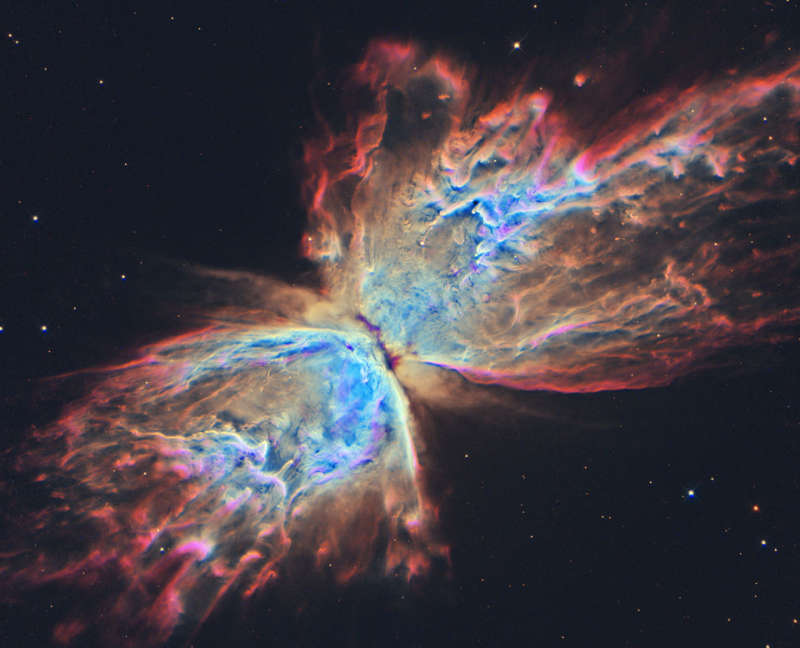 |
Астронет: Астрономическая картинка дня Туманность Бабочка от Хаббла http://www.variable-stars.ru/db/msg/1322403/eng |
Credit & Copyright: Francesco Antonucci
Explanation:
The bright clusters and nebulae of planet Earth's night sky are often
named for flowers or
insects.
Though its wingspan covers over 3 light-years,
NGC 6302 is no
exception.
With an estimated surface temperature of about 250,000 degrees C,
the dying central star of this particular
planetary nebula has become exceptionally
hot, shining brightly in ultraviolet light but hidden from
direct view by a dense torus of dust.
This
sharp close-up
of the dying star's nebula was recorded
in 2009 by the Hubble Space Telescope's Wide Field Camera 3,
and is presented here in reprocessed colors.
Cutting across a bright cavity of ionized gas, the dust
torus
surrounding the central star is near
the center of this view, almost edge-on to the line-of-sight.
Molecular hydrogen
has been
detected in the hot star's dusty cosmic shroud.
NGC 6302 lies about 4,000 light-years away in the
arachnologically
correct constellation of the Scorpion
(Scorpius).
APOD Wall Calendar:
Nebulas and Star Clusters
Authors & editors:
Robert Nemiroff
(MTU) &
Jerry Bonnell
(USRA)
NASA Web Site Statements, Warnings,
and Disclaimers
NASA Official: Jay Norris.
Specific
rights apply.
A service of:
LHEA at
NASA /
GSFC
& Michigan Tech. U.
